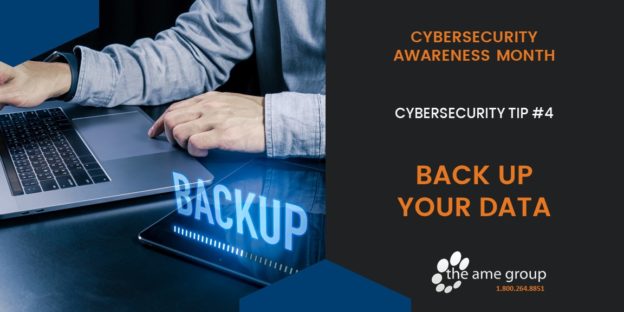VICTOR IS A SYSTEMS ENGINEER AT THE AME GROUP, MANAGING BACKUPS FOR OUR CLIENTS AND OUR OWN! WE ASKED HIM, WHAT IS IMPORTANT TO KNOW ABOUT BACKUPS AND RECOVERY?
Backups are something everyone wishes they had when technology goes south. Like the insurance policy, you didn’t size right or bother to purchase.
The need for backups AND reliable data recovery is becoming the number one priority for many businesses, and it should be. Even hard drive companies are starting to build data recovery services into their warranties and obviously at a price to the buyers. Why are they doing this? Most people do not understand the risks to their data. Recovering your data from broken hardware is becoming more commonplace as our reliance on technology grows.
The case for managing backups is easy to make. Just search for some stats from the last decade.
According to the National Archives & Records Administration 93% of companies that lost their data center for 10 days or more due to a disaster filed for bankruptcy within one year afterward.
The cause for data loss is almost equally split between hardware/system failures, human error, and malware.
Over 55% of small businesses are NOT prepared for data loss (Clutch)
25% of all PC users suffer from data loss each year (Gartner)
With the recent increase in ransomware attacks, backups are the only things organizations can lean on when their network security fails. Having a current reliable backup is a vital part of the network security plan for your businesses.
THERE ARE A FEW QUESTIONS TO CONSIDER WITH YOUR CURRENT BACKUP SOLUTION AND ITS EFFECTIVENESS.
How are your latest backups being validated?
More than 20% of the installed backup solutions proved to fail in allowing the recovery of any data at all according to a study done in Minneapolis (Ontrack).
Are your backups running frequently enough?
Determine this by the amount of change in your data from day to day and how much you can live without if lost.
Is your backup data distributed according to what the 3-2-1 rule dictates?
Data needs to reside in three places on two different forms of media and at least one copy of the data needs to exist offsite and off-network.
If you needed to recover from the offsite location how quickly could you get your hands on that data?
Uploading a few gigabytes every night doesn’t mean you have a workable offsite backup. We had a client that needed help with reworking their backup solution, they came with the complaint that their current provider was taking 72 days to get their data from the cloud to the local network!
Outcomes
Being the expert in managing backups and recovery has exposed me to just how terrible things can get when a backup is not in place. The losses range from a 10-year collection of family memories to pending lawsuits that hinged on the lost digital evidence. The damage has been painful to witness. It is a relief when a good backup is in place, and especially when it is validated on a regular basis.
Back to the insurance analogy, when all is well, we assume we are covered sufficiently. We don’t give much thought to the limits, options, and fine print until we are forced to use it when disaster strikes. Managing backups is similar; most of us would rather assume backups are working and haphazardly set up something just to settle the concern, but when a failure occurs unfortunately quite often damage is irreversible.

